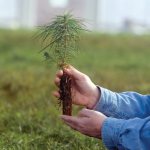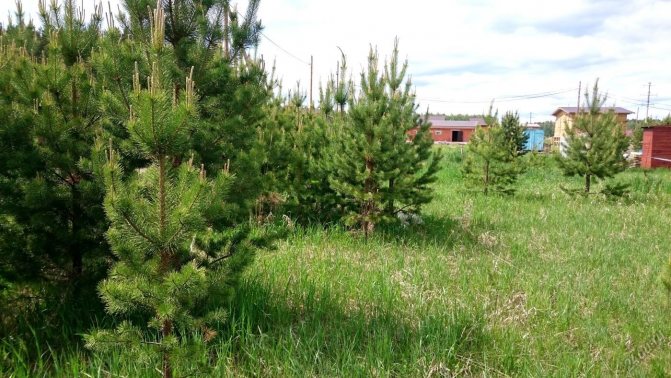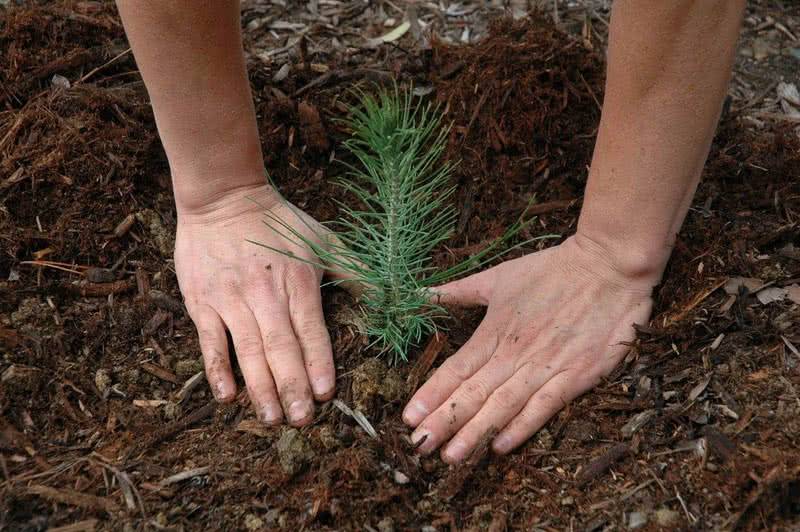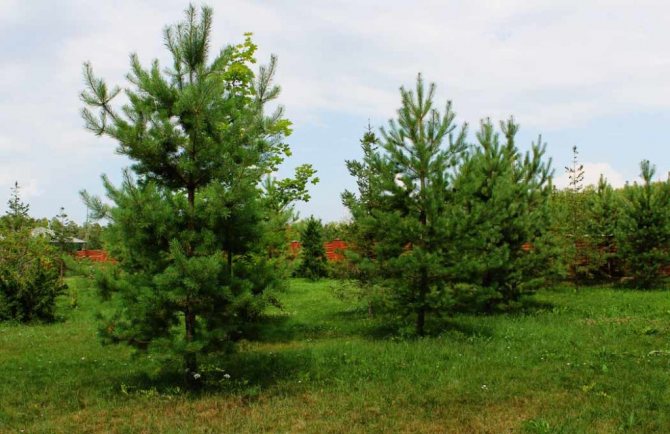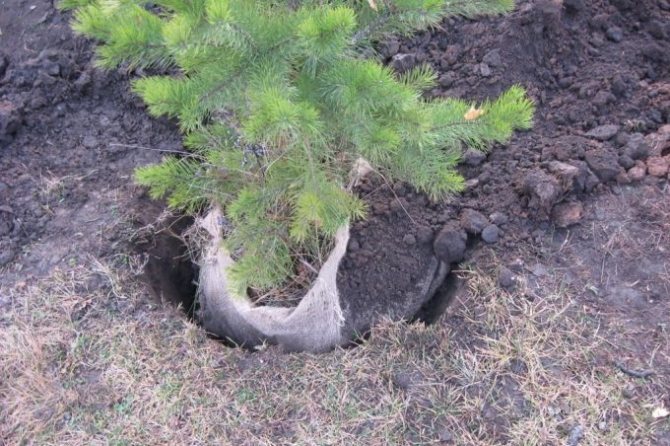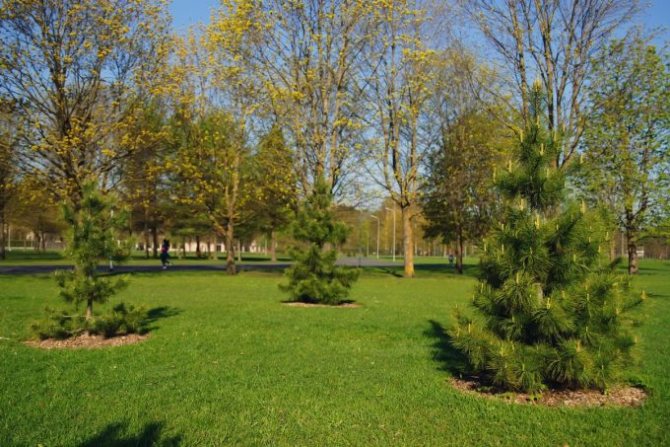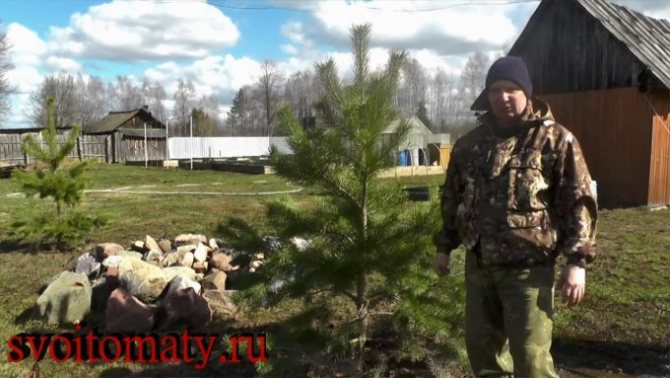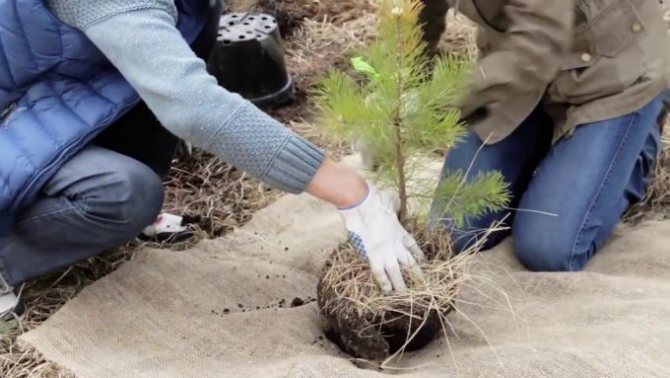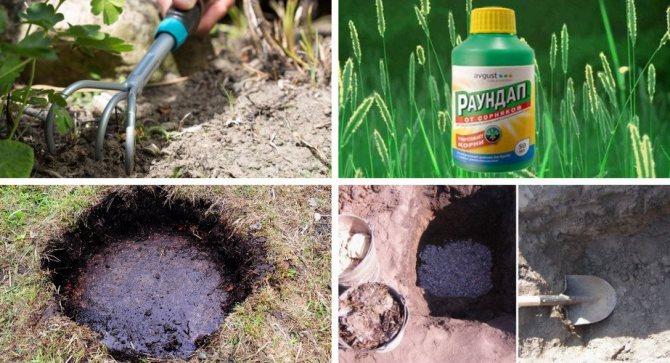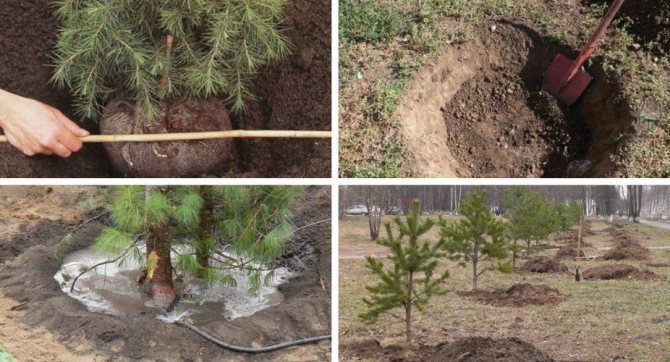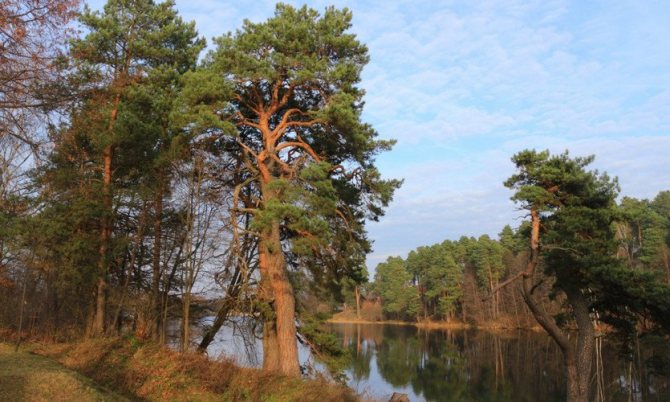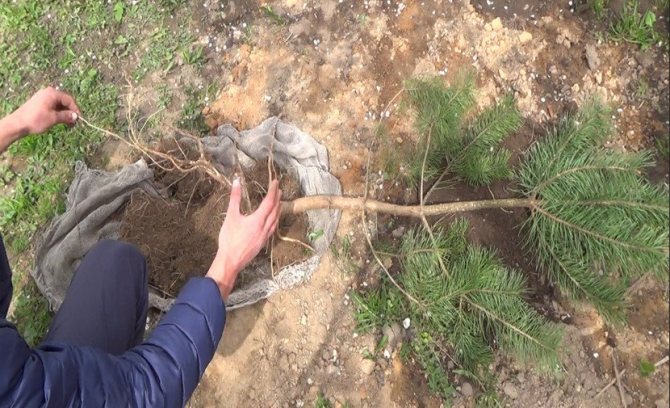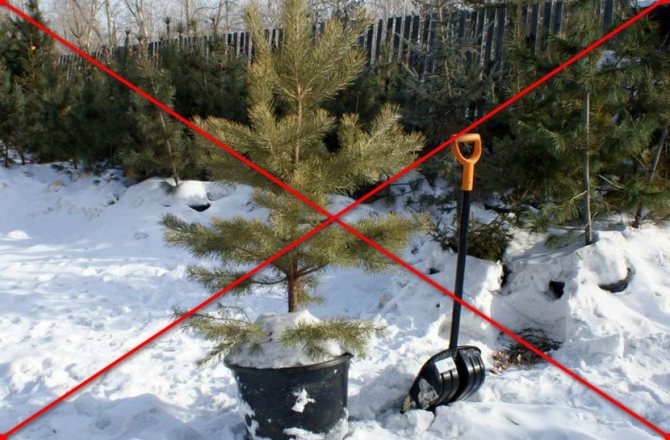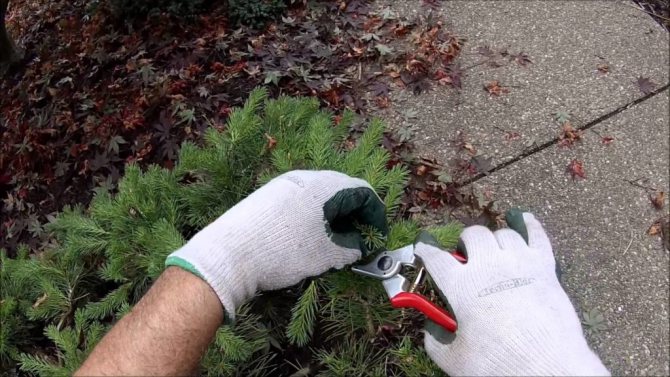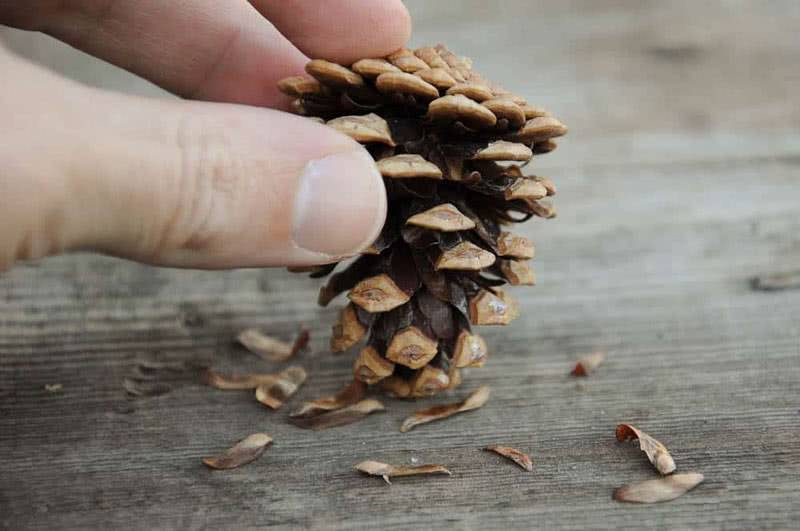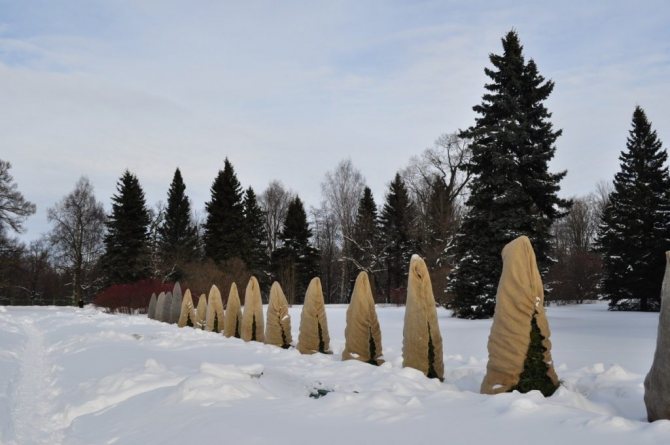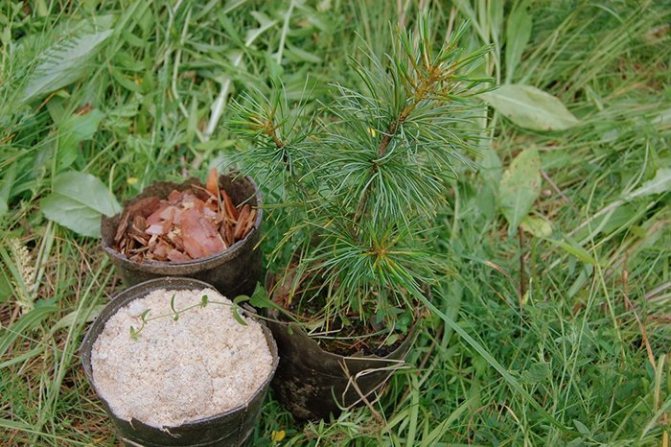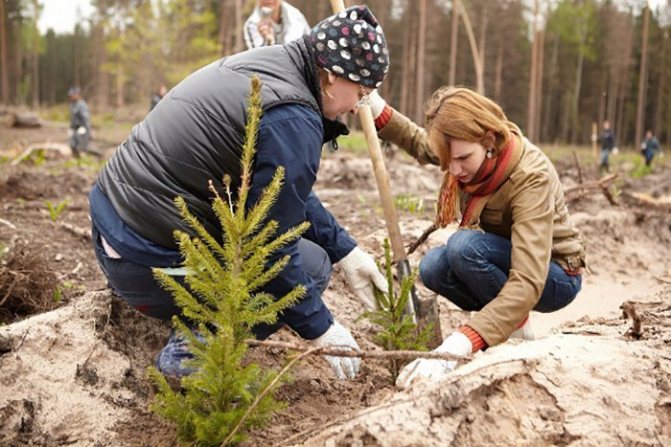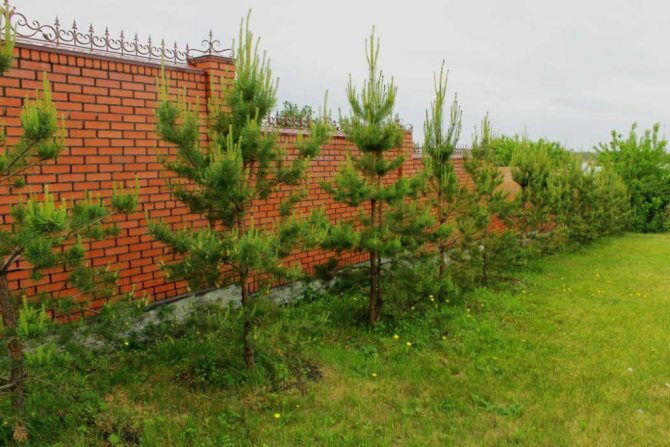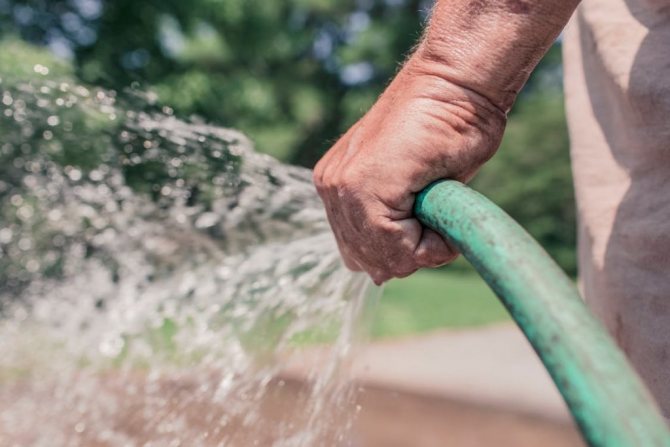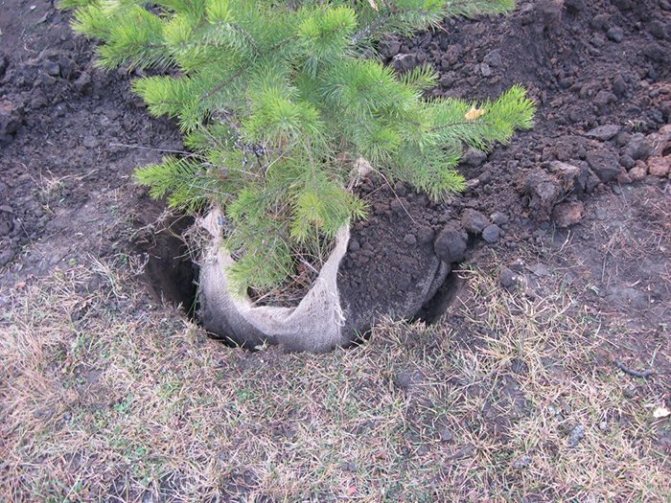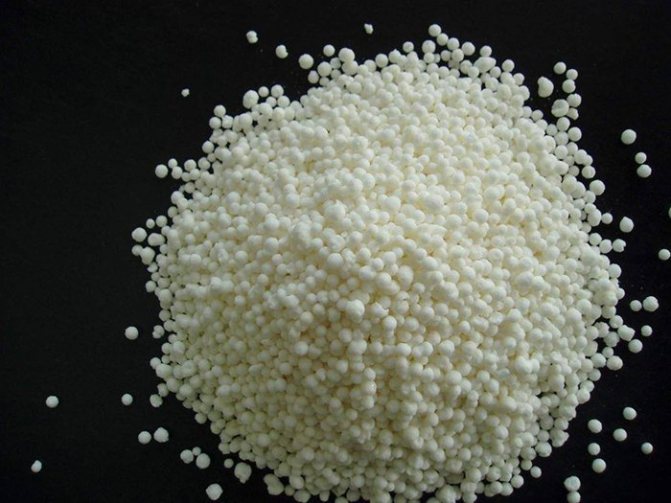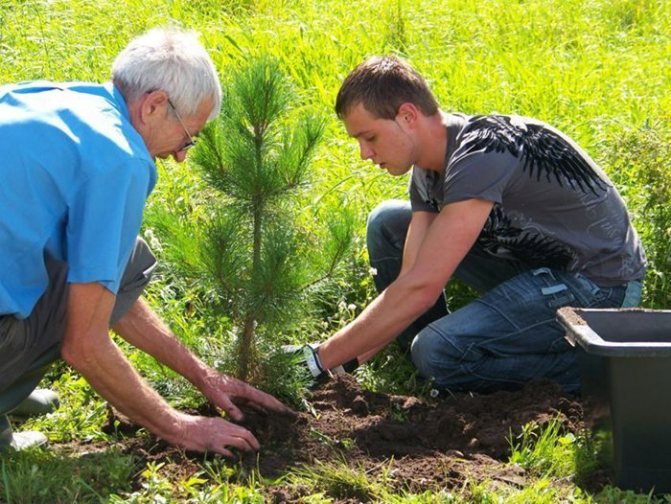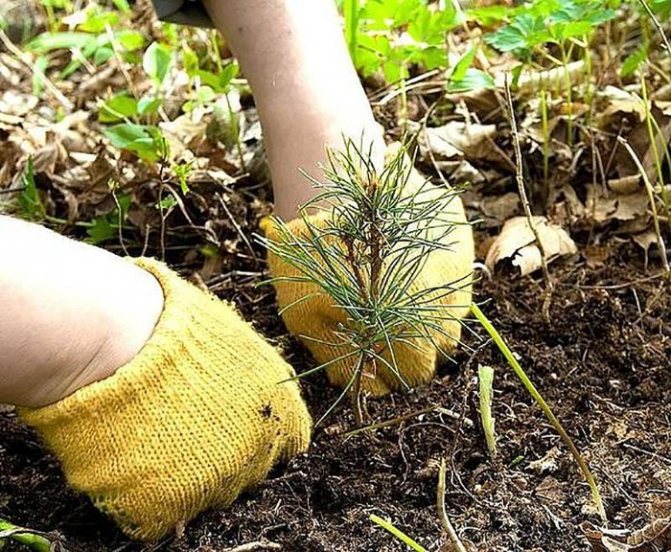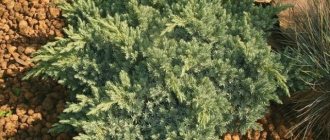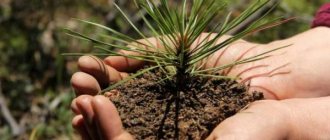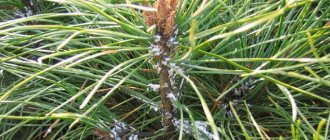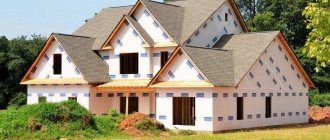Pine is a light-loving evergreen tree that adorns country gardens. It fits well into any design solution. Difficulties often arise in the process of growing and planting. Those who are going to start an evergreen beauty at their dacha need to know how to transplant a pine tree from the forest to a plot in spring and summer, the rules of care and maintenance.
Where can I get a seedling?
Before planting a pine tree, you need to decide how you can grow a pine tree in the garden. There are several options:
- Plant an adult pine;
- Planting pine seedlings in open ground;
- Take advantage of seeds;
- Grow Christmas trees in a pot.
The seeds can be used but will take a long time to grow. It is more convenient to purchase seedlings for planting in the garden. Planting seedlings has advantages - whole roots, because it is very difficult to place wild trees in the garden without damaging the roots. Buying young seedlings immediately allows you to choose the tree you need in height and age. Sellers will tell you in detail how to plant and care after planting seedlings.
To transplant trees from the wild to a plot in the country, you need to prepare thoroughly. An ordinary pine tree takes root only in fertile soil, and it also needs special fertilizer, otherwise the branches will begin to dry quickly. When planting conifers, the roots often deteriorate, so planting must be deep into the soil.
Scots pine, description
This evergreen coniferous tree is native to Asia and Europe. It can reach forty meters in height. The crown of young trees has a pyramidal shape, while in old trees it is loose. Scots pine is distinguished by a straight trunk and reddish bark. Pine planting in autumn is carried out in clay, peat or sandy soils. She is unpretentious to them. It can grow from a seed. It is enough to collect the cones in winter and treat them with a special solution against fungal diseases.
Scotch pine is easy to grow. The main thing is that when planting the roots are not exposed, there should be a clod of earth on them. Otherwise, the seedlings will not take root and die. The advantage of this species is rapid growth, and the disadvantage is the intolerance of gas pollution and smoke in the air. This is why the forest beauty does not adorn city streets.
Seat selection
It is necessary to plant a pine tree on a plot in the country so that it is sheltered from the sun. Other plants must grow at some distance to form a natural shade.
It is advisable to plant a pine tree in the yard on sandy areas. It is difficult to grow pine on a mountainous and clayey surface. If there are no sandy spots in the garden, you need to arrange drainage yourself. You need to dig a landing hole and place a lump of sand there instead of earth.
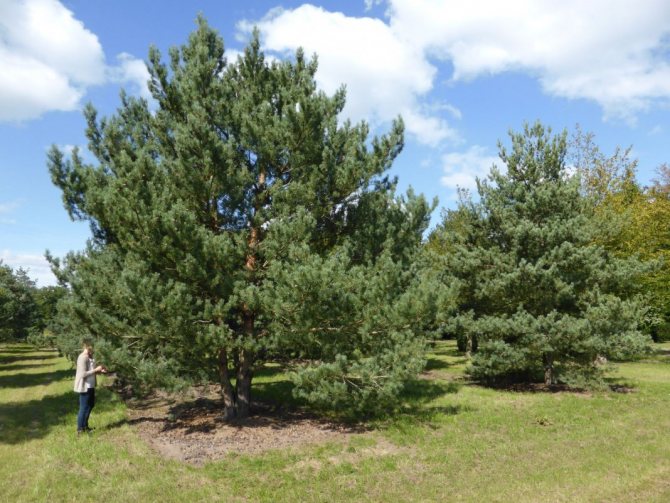
Expanded clay also makes good drainage for young seedlings. The task of how to grow a pine in a mountainous area is simple, since there is a variety of mountain pine. She has strong roots and she grows without problems.
Mountain pine, description
It is a very beautiful and useful plant. Nowadays, gardeners are passionate about this culture. It is increasingly planted in personal plots. The most popular species is the mountain pine. This species comes in a variety of shapes and sizes. Grows as a fluffy bush or small tree.Or it can be a groundcover form of a plant. The characteristic features of the mountain pine are:
- Dark brown scales that cover the top of the trunk.
- Short, twisted, hard needles.
Small cones have short legs and are colored gray-brown. This pine blossoms and bears fruit since the age of ten.
The mountain pine tree, the photo of which you see, has a number of advantages:
- It is very branchy and compact. This is important when planning plantings on the site.
- It tolerates low temperatures and drought well.
- It grows on any soil.
- Not susceptible to disease.
- Tolerant to air pollution and soil compaction.
- Does not suffer from heavy and frequent snowfalls.
Disadvantages include slow growth. Due to its excellent decorative properties, it is used for landscape decoration.
When to plant?
It is recommended to plant conifers in autumn and spring. You can also transplant trees to the site in winter, but this is only suitable for large plants, not young seedlings. For transplantation, a special technique is required, with the help of it you have to dig out an object with a lump of earth so that the roots remain intact. It is safer to plant pine trees in the yard in the fall and spring.
During the active growth of conifers, planting is not recommended.
The advantages of transplanting in the spring are that over the summer the roots of young seedlings become stronger, the tree grows quickly and instantly takes root in fertile soil. It is also possible to plant a pine tree in the yard in the fall, since there is no active growth, and the main task of the plant is to prepare for life in winter.
If it was not possible to plant pines in the garden in spring and autumn, and the time for active growth began, you need to cover the branches from the sun.
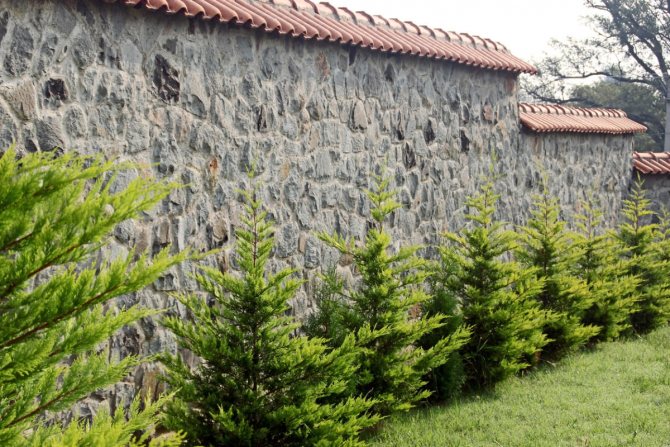

Tree care after transplant
If the pine is transplanted in the spring months, then there is no need to water it after the procedure. During this period, there is enough moisture. Do not overfill ephedra. When the transplant is done in the fall, the seedling is watered regularly. Watering stops two weeks before the predicted frost. In order for the crown to be spreading, the plant is fertilized with additional fertilizing. You can enrich the soil with humus. Two years after transplanting, the plant is additionally covered with spandex for the winter. After the ephedra grows up, it will easily endure frost.
Pine should be watered two to three days after transplanting. During this time, the tree takes root and begins to grow. In the spring, the seedling is not watered. In summer, when the drought begins, it is watered at the root and the crown is shed from a watering can. If transplanting takes place in summer or autumn, then watering every seven days is enough. At this time, the pine will prepare for frost and adapt. Shortly before the onset of frost, the plants stop watering.
Planting pit preparation
To transplant trees from the wild, you need to dig a planting hole and prepare it properly. You can grow a pine tree in your garden by placing the roots deep in the soil.
Planting conifers in the garden occurs only with a lump of earth, so the size of the pit must match the lump. If the lump is different in size, it will be more difficult to plant a pine tree. It is advisable to dig out a larger lump, since if the soil lump is small, the roots may be damaged on the bottom.
To transplant trees up to 0.7 meters, the size of the lump pit must be at least 0.36 square meters. A lump in size is needed from 0.64 square meters, if it is planned to use coniferous trees - from 0.7 meters. The pit is larger, because sand is placed on the bottom for drainage, which is mixed with a lump of soil.
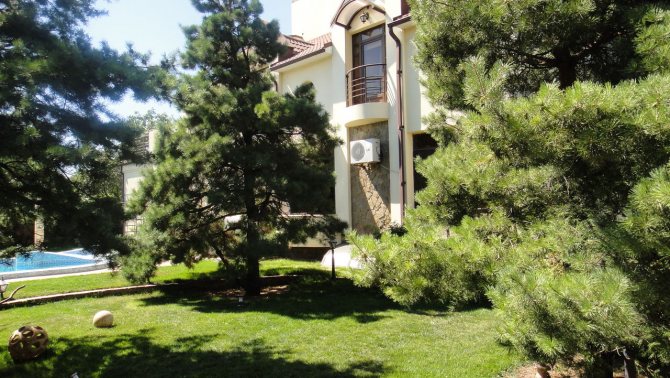

Transplanting a five-year-old pine tree from the forest
Despite the fact that conifers respond well to replanting from the forest, it is very difficult to replant with minimal damage to their integrity. Older trees develop well roots that grow in different directions.
When transplanting, the tree can hurt, so it needs to be done in two stages:
- Transplant preparation, which consists in creating a planting pit 2 weeks before transplanting.
- The very process of replanting a tree, with its further strengthening.
The process of caring for the tree is no less important. One correct pine transplant is not enough, since the lack of proper care will provoke its premature death.
Selection and preparation of a seedling
Pine from the forest should be carefully checked before digging up. Outwardly healthy plant specimens may turn out to be brittle, and this is a minus. If such trees are transplanted, they will not grow and dry out quickly.
It is strictly necessary to dig a lump together with a tree, otherwise the roots without a lump will die off within half an hour. A lump with a root system must be wrapped in a thick cloth to avoid falling lumps.
Understanding how to transplant a pine tree without falling pieces is very important, and the main task is to drive a shovel deep into the soil and keep the shape of the coma. The pieces of earth that have fallen apart will be useless, and you won't be able to transplant trees. The fabric must be damp. It is slipped under the lump in the process of digging up and thus the tree is taken out from the bottom.
How should you transplant?
In order for the pine to take root well, you need to find a suitable place for it. Pine loves sandy and sandy loam soils with acidity close to neutral (pH value 5.5-6.5), prefers sunny areas. For disembarkation, it is better to take a place on a hillock than in a lowland, without swampiness and high standing of groundwater. Heavy clay or saline soils are not suitable for growing pine, and fertile garden soil is not suitable.
In most cases, pines are planted around the perimeter of the plots. If you plan to grow several trees, then the area for them should be sufficient to maintain the distance between them 3.5-4 m for tall varieties and 1.5-2 m for low-growing varieties.
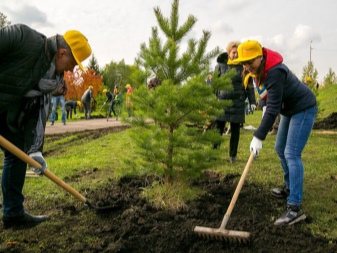

The powerful root system of an adult strong ephedra, located close to the soil surface, is capable of turning out earth layers, destroying garden paths, penetrating the foundation of a house and damaging it, therefore, it is impossible to plant pine in the immediate vicinity of buildings. In addition, there is a possibility of lightning striking a tall pine tree during summer thunderstorms, a resinous tree can catch fire, and the fire can easily spread to housing if the tree grows close. According to fire safety standards, planting tall trees should be at a distance of at least 10 m from buildings.
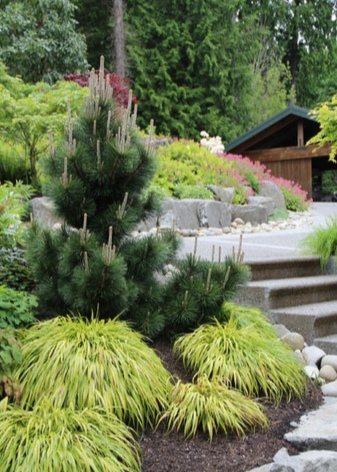

When deciding to plant a pine tree on the site, you need to take into account the moment that in the process of growing the tree will take more and more resources, and when it grows, nothing will grow around it within a radius of 5-6 m. Fruit plantations grow without problems in the vicinity of a pine tree only when planted at an appropriate distance.
Transplanting a young pine tree from the forest to your summer cottage is not as easy as it might seem at first glance. For the procedure to be successful, it is necessary to carry out preparatory work before digging a seedling in accordance with certain rules and recommendations of specialistsso that the little pine tree does not die due to the stress suffered and the mistakes made.
Landing
To plant a pine tree from the forest, you need to prepare a planting site. First, it is necessary to pour water onto the bottom so that the distance from it to the edge of the pit is equal to the occupied volume. Place the seedling deep in the soil and water it.
In autumn, deepening is necessary, so the bottom should still be dug, increasing the distance to the edge. If you transplant trees without these manipulations, they do not take root well. At the end of planting, sprinkle the edges with soil and water with water and fertilizers. Don't expect strong growth in the fall. We water it with fertilizers so that the pine tree in the fall has more strength to strengthen the root system.
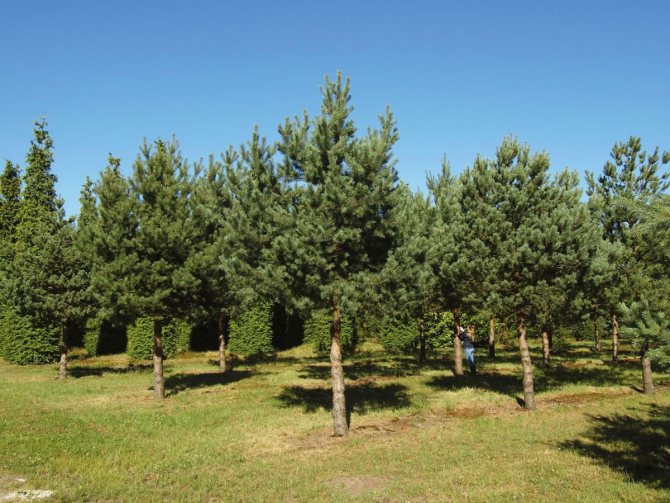

How to transplant Pitsunda pine from the forest
Forest trees get used to living in certain climatic conditions, so special rules must be followed when digging. First, you need to ditch the pine in a circle, after which you gradually expose it and get the entire root system out of the ground. During this period, care must be taken not to harm the integrity of the rhizome.
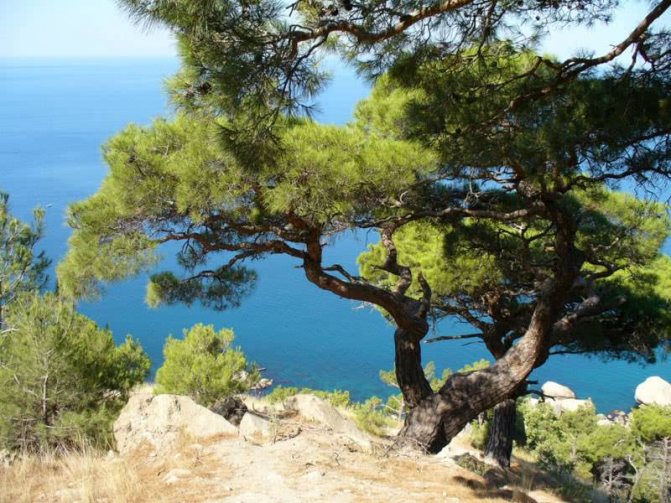

Pitsunda pine
In order for a young pine to take root better, it must be transplanted into forest soil brought directly from the forest.
It contains all the components necessary for a coniferous tree, so it will quickly provide comfortable conditions for its development.
It is better to carry out the transplant process in several main stages:
- Choose a good location for the future location of the tree. A sandy slope is ideal.
- At the bottom of the planting pit, fine gravel should be poured to improve drainage. You also need to add manure and a layer of soil.
- It is very important that the roots of the planted tree do not come into contact with the fertilizer, as this can harm them.
- Nitrogen fertilizers are added to the cavity of the spacious pit, the pine tree is inserted directly with the soil remaining on the roots.
- After transplanting, you need to water the tree with water, while maintaining this water balance every day so that the pine tree stands for a certain period in a kind of "swamp". After a few days, the watering process can be shortened, and add liquid to the pine only 1-2 times a week. It is important to ensure that water is absorbed, as too much water will lead to the death of the tree.
Care
Planting and grooming are key when deciding to replant trees. When planting, it is important to properly dig the bottom, and in care it is necessary to hide young trees from the sun and fix the sweeping branches in adult specimens. The plus of autumn is that the sun is not very aggressive, and the plant can not be shaded.
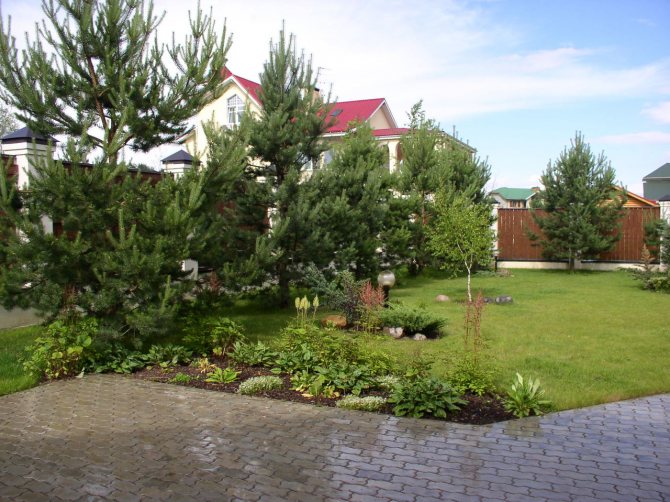

In the spring, planting and care are slightly different, the seedling grows quickly, especially if we water it with fertilizers, but at the same time it is exposed to desiccation and attacks by pests.
Only special preparations can save from pests, but the use of chemistry is an obvious disadvantage for a plant.
It is possible not to additionally fertilize the soil if the tree grows well due to the fertile soil added to the pit, but we water it regularly.
We propagate a pine tree with our own hands in a summer cottage
Planting pine seedlings is a very interesting activity, but you probably want to grow it from seeds someday. That is why it is necessary to give several recommendations on how to do it correctly so that everything works out the first time and does not have to make unsuccessful attempts over and over again.
- Stratification is not needed, but the germination process can be accelerated by changing the ambient temperature. You need to put the seeds in the refrigerator for a couple of months, then soak them in warm water (+40 degrees). Next, we plant them in boxes.
- Pots (boxes) should be with good soil air exchange, while being exposed to sunlight. We recommend covering them with foil until the first shoots are obtained. Then you should open them, keep them warm and give access to air.
- For seed germination, the soil must be peat and fertile black soil. Planting of cedar pine is generally carried out using peat tablets.
- Do not sow seeds too deeply. The ideal depth is 2-3 centimeters, it can be shallowed up to 1 cm.
- The minimum distance between seeds is 2 centimeters, so that it is convenient to remove sprouted pines and transplant to another place.
Common mistakes
Incorrect transplantation of a pine sapling from the forest to a house plot or summer cottage will inevitably lead to the fact that the tree does not adapt well to a new place, does not grow, is sick for a long time, or even dries up altogether, seemingly for no apparent reason. Often the owners are lost in conjectures and cannot understand what is the matter.The reason for this condition of the seedling can be gross mistakes made when transplanting an ephedra. The most common ones are:
- improper digging of a seedling, insufficient size of the earthen coma, as a result of which the roots are damaged;
- prolonged exposure of the dug out seedling in the open air with bare roots, which leads to drying out and death;
- improper placement of a tree in a planting pit with a deepening of the root collar;
- wrong choice of landing site;
- non-observance of the optimal timing of transplantation, which significantly reduces the survival rate;
- planting in unsuitable soil.
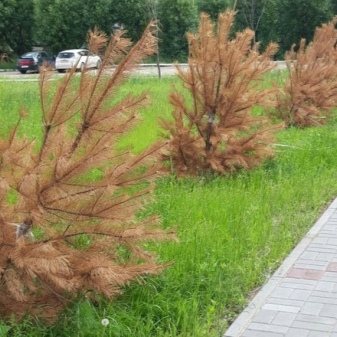

If you prepare well for transplanting the ephedra, take into account all the important points, try not to make mistakes, you can significantly increase the survival rate of seedlings, and then young strong pines, and then adult trees, will delight the owners of the site all year round: in the summer they will fill the surrounding air with a wonderful resinous aroma , and in winter, fluffy green beauties in white snow caps will create picturesque winter landscapes, from which you simply “cannot take your eyes off”.
It should be noted that ancient Slavic beliefs have survived to our times, according to which it is believed that pine, oak and birch have strong energy, and their presence on the site strengthens the house and household members. According to other signs, it is impossible to grow strong forest conifers near the house, they "survive" the owners from the house. Of course, for most of our contemporaries, superstitions and omens are irrelevant, but still there are many suspicious people who continue to believe in something like that. It is better for such people to refrain from planting pines on their plots.
For information on how to plant a pine tree correctly, see the next video.
Pine transplant procedure
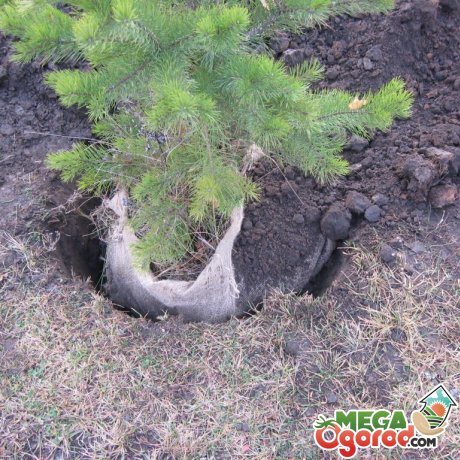

Pine transplantation is carried out in several stages ^
- Initially, you need to draw a circle on the ground, which will be equal in diameter to the height of the pine. This method is most suitable for trees, the trunk length of which is no more than 1.5 meters.
- Next, you need to dig out the ground in a circle. It is necessary to dig out the soil evenly over the entire diameter of the circle. In the event that difficulties arose during the digging of the earth, then it is necessary to go under the "pine", that is, the shovel must be directed to the taproot of the pine.
- If, while digging up a tree, you stumbled upon a rhizome, then in no case should you chop it down. This is because pine is very sensitive to damage and may not take root in a new place.
After the circle is drawn, you need to make sure that there are no foreign objects or masonry along its diameter.
When lifting a tree, you need to grab the trunk at the very end. It is necessary to transport the pine as carefully as possible, since the slightest damage can lead to tree injuries. When transporting pine, do not take it by the branches or the top. The less damage the pine gets during transportation, the better and faster it will take root. It is best to transport this tree on a thick cloth.
In the event that you want to transplant a large tree, then you will need to use a drill to dig it out.
In order to pull out the trunk, the tree must be tied with one end of the rope to the crown of the head, and the other end of the rope must be fixed to the car. It is necessary to pull out the barrel with the help of a car, as it will not be possible to perform this action manually.
The lower and wilted branches of the tree must be chopped off without fail. This is due to the fact that as a result of damage that occurs as a result of digging and transporting the tree, the tree will hurt, which will negatively affect the lower branches.

